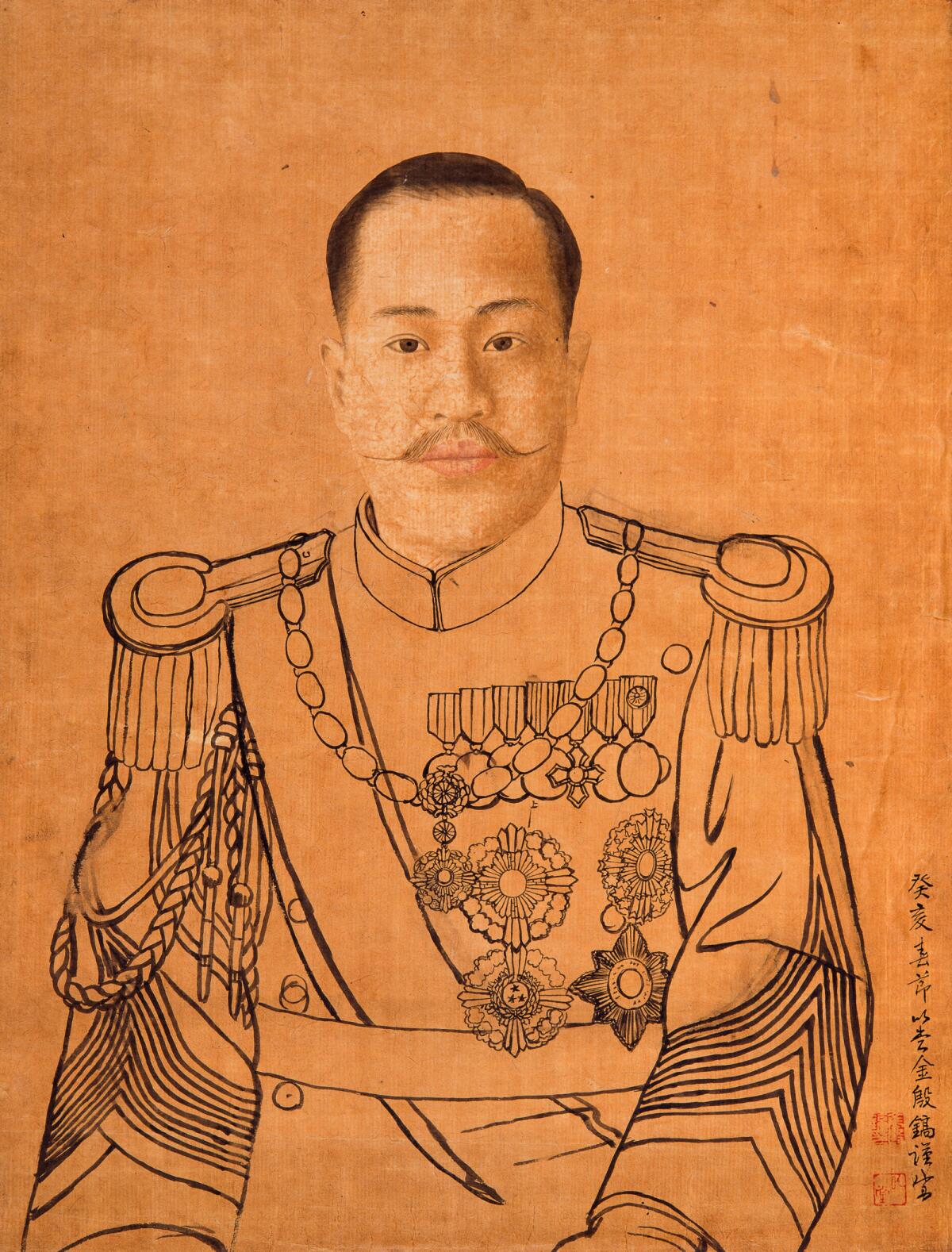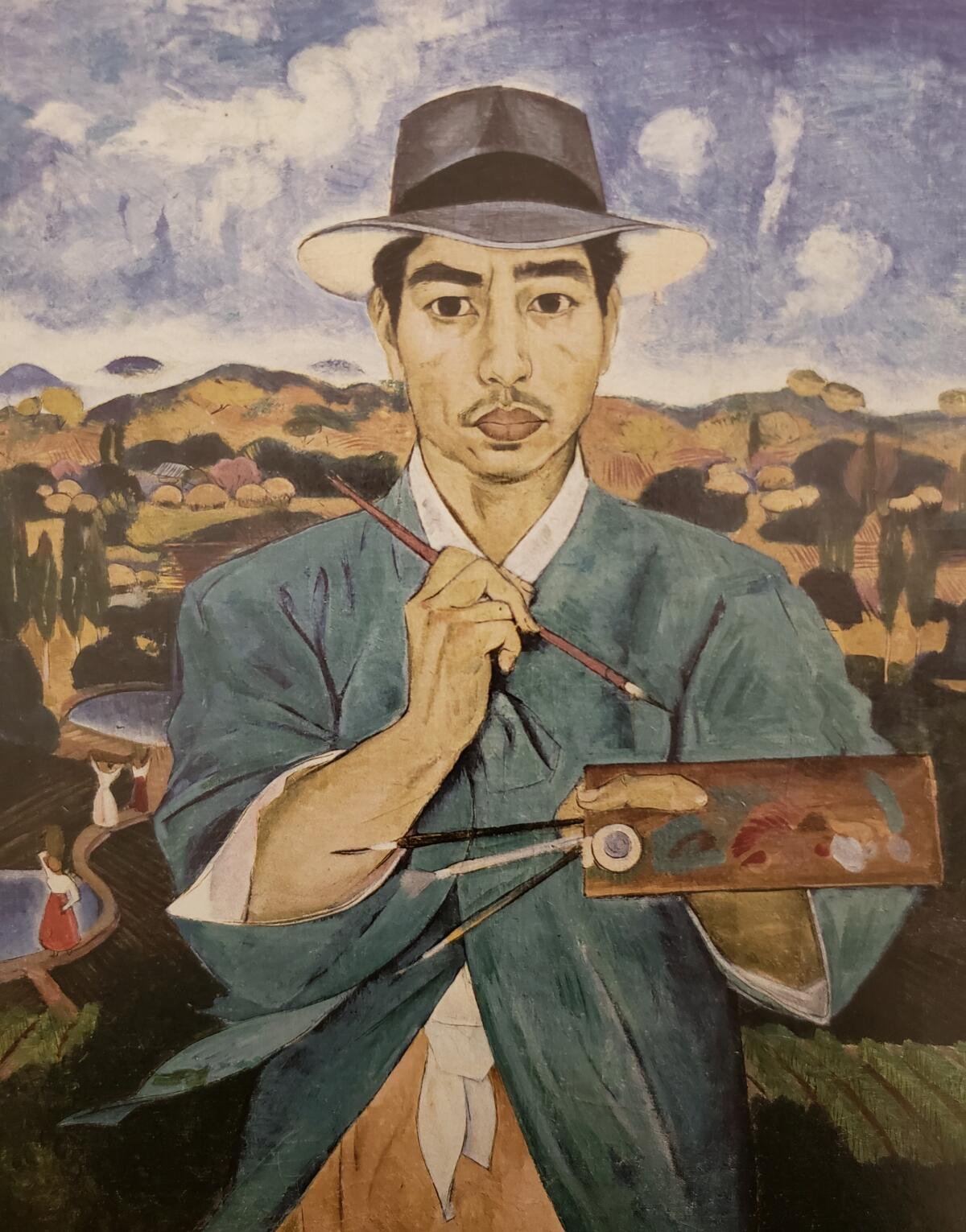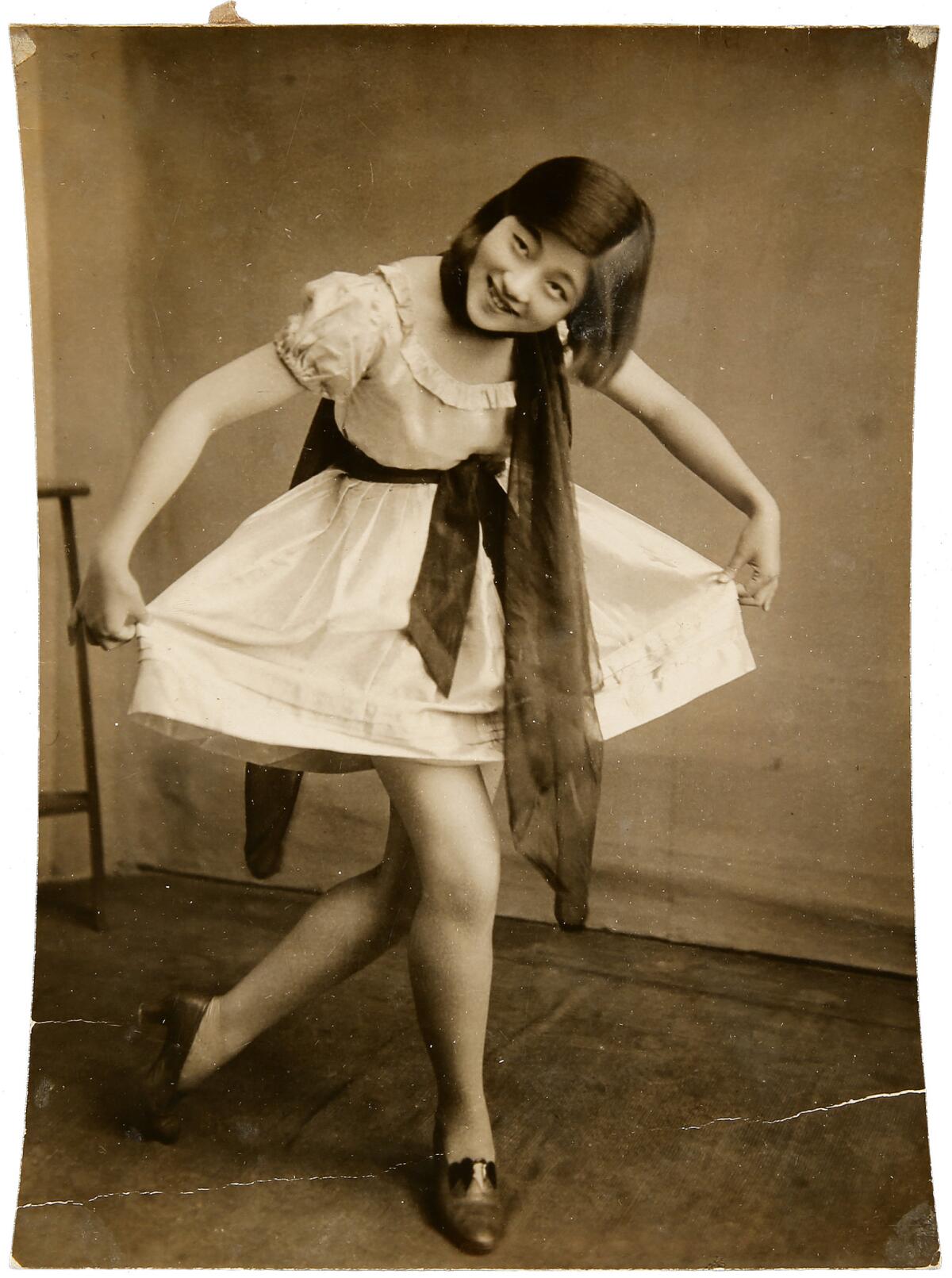Review: Korean Modern art gets its long-overdue spotlight at LACMA

Artists, being people, are drawn to power. Like moths to a flame.
What they do in their work with the relationship they seek with it can vary widely. But rarely is power just ignored. A sizable new exhibition at the Los Angeles County Museum of Art looks at what 88 painters, sculptors and photographers in Korea did with their curiosity about artistic power over seven rather tumultuous decades.
The show begins in 1897, when the steadfastly isolationist Joseon Dynasty drew to a close after a sweeping rule that lasted 500 years. It ends around 1965, or roughly the start of the contemporary era.
The power these Korean artists were drawn to was Modern art in the West, especially Europe and, secondarily, the United States. Often that art was filtered through the example of Japanese artists and teachers, who had been involved in a variety of Western interactions and who colonized Korea from 1910 to 1945. That makes the power transfer even more complex.

According to LACMA, “The Space Between: The Modern in Korean Art” is the first major exhibition anywhere to examine art produced during a huge cultural transformation that provided one foundation for the relatively recent emergence of a decisive technological and, more modestly, artistic powerhouse — at least on the southern portion of the peninsula. The democratic South, wealthy and liberal, couldn’t be more different from the isolated, poor, authoritarian North.
A poignant moment comes in a technically accomplished 1948-49 self-portrait by Lee Qoede — and learning that he virtually disappeared after moving across the 38th parallel in 1953 when the Korean War rumbled to a close. Frontal, waist-high, intently staring straight ahead, the artist holds a palette and paintbrushes at his chest as an emblem to signify his identity.
Lee’s portrait is layered in subtle but complicated ways.
The different paintbrushes he brandishes are for oil paint, watercolors and ink — the first an illustrious European material since the Renaissance, introduced to Lee’s homeland less than 50 years before, the others renowned artistic materials used in Korea for centuries. (The first oil painter was Ko Hui-dong, whose 1915 self-portrait is a casual, subtly erotic composition in which he reclines fanning himself with his shirt open, as if intuiting Willem de Kooning’s later declaration that flesh is the reason oil paint was invented.) Lee’s long blue smock is a common type evolved from an ancient Chinese style of overcoat, but his fedora with a smartly pinched crown is super-modern, initially embraced by feminist Frenchwomen late in the 19th century and made fashionable for men in the 1920s by no less than the Prince of Wales.
Lee is navigating dissimilar times and places.
His general pose is like that traditionally reserved for a dignitary, so he’s elevating his rank as a working artist. In the placid, rolling landscape that unfurls behind him, women in traditional dress toil in the fields. The self-portrait celebrates work — a key value in Confucianism, firmly entrenched in Korea from China by the 15th century. Here, work includes the work of art.

LACMA curator Virginia Moon, chief organizer of the show with colleagues at Korea’s National Museum of Modern and Contemporary Art, notes in the helpful catalog that once “things Western became equated with things modern, Korea changed irrevocably.” The origin and spread of that equation is the show’s subject, which is a relatively new field of art historical scholarship.
It’s ably presented, if without much excitement. The galleries are laid out in five sections. Few of the 131 paintings, photographs and sculptures are compelling, except in a documentary way.
The show starts with the impact of photography, its most consistently engaging medium. “Modern Encounter” considers the camera’s arrival — more than 40 years after its European invention — into long-closed Joseon society. Formal ink portraits of dignitaries are juxtaposed with similarly formal photographic portraits. A painted 1923 study for a royal portrait of Emperor Sunjong by Kim Eunho looks almost like a linear tracing made from a photographic poster.
Cameras, as always, upend everything, and the medium took off during the Japanese colonial period. Photographs take a variety of forms and subjects, whether the idealized figure study by Jung Hae-chang, the strange tabletop construction of a mountain range by Min Chung-sik or the painterly social realism of rural laborers and an unemployed city kid by Limb Eung-sik.
In fact, according to the show, a photograph is the most widely reproduced Korean image ever: Shin Nakkyun’s playful, black-and-white 1930 picture of celebrated dancer Choi Seunghui. Dressed rather like a soon-to-be-popular Shirley Temple (Choi was 31 at the time) she curtsies, holding her girlish skirt wide with delicate fingers, her broadly impish grin throwing into doubt any assumption of female obsequiousness.

“Modern Response” charts the struggle for a distinctly Korean identity during the Japanese occupation between 1910 and 1945, while “The Pageantry of the New Woman Movement” spotlights the emergence of an unprecedented feminist attitude in a starkly male-dominated Confucian culture. (That’s where the Choi photograph comes in.) “Modern Momentum” incorporates Cubism and abstraction, and “Evolving Into the Contemporary” pushes further toward the globalized present.
The most surprising object is Quac Insik’s aptly titled “Artwork” (1962), a pane of glass that he broke and then painstakingly reassembled, shard by shard. The spidery lines of the reassembled pane are a careful worker’s diary of its destruction and reconstruction — and not a bad metaphor for the arc of Korean history in the 20th century.
The L.A.-based artist Tala Madani’s midcareer survey at MOCA is alternately hilarious and eye-popping.
The difficulty with the show is the relative lack of adventurous works such as this one. Much is merely derivative, noteworthy as historical chronicle but less so as artistic invention and achievement.
Lee Ungno has great facility with ink, for example, but executing the densely interwoven vines of a wisteria, frequently a symbol of longevity, to resemble a thoroughly nonfigurative Jackson Pollock drip-painting seems dismissive in a perhaps unintentionally jokey way. The 1959 wood carving by Kim Chung Sook, one of the show’s few women, looks like adept student work crossing Constantin Brancusi and Henry Moore. Neither turns the influences to good effect.
The organizers seem to know it, grouping many paintings on gallery walls in an old-fashioned Victorian hanging, where nothing takes primacy over anything else. Being drawn to Modern Western art opened up Korean culture in many ways hitherto unknown in the West, and the exhibition is worth seeing to understand the dynamic. Just don’t expect many satisfactions beyond organized historical narrative.

Where: Los Angeles County Museum of Art, 5905 Wilshire Blvd., Los Angeles
When: Mondays, Tuesdays and Thursdays 11 am-6 pm; Fridays 11 am-8 pm; Saturdays and Sundays 10 am to 7 pm. Closed Weds. Through Feb. 19.
Info: (323) 857-6000, www.lacma.org
More to Read
The biggest entertainment stories
Get our big stories about Hollywood, film, television, music, arts, culture and more right in your inbox as soon as they publish.
You may occasionally receive promotional content from the Los Angeles Times.








